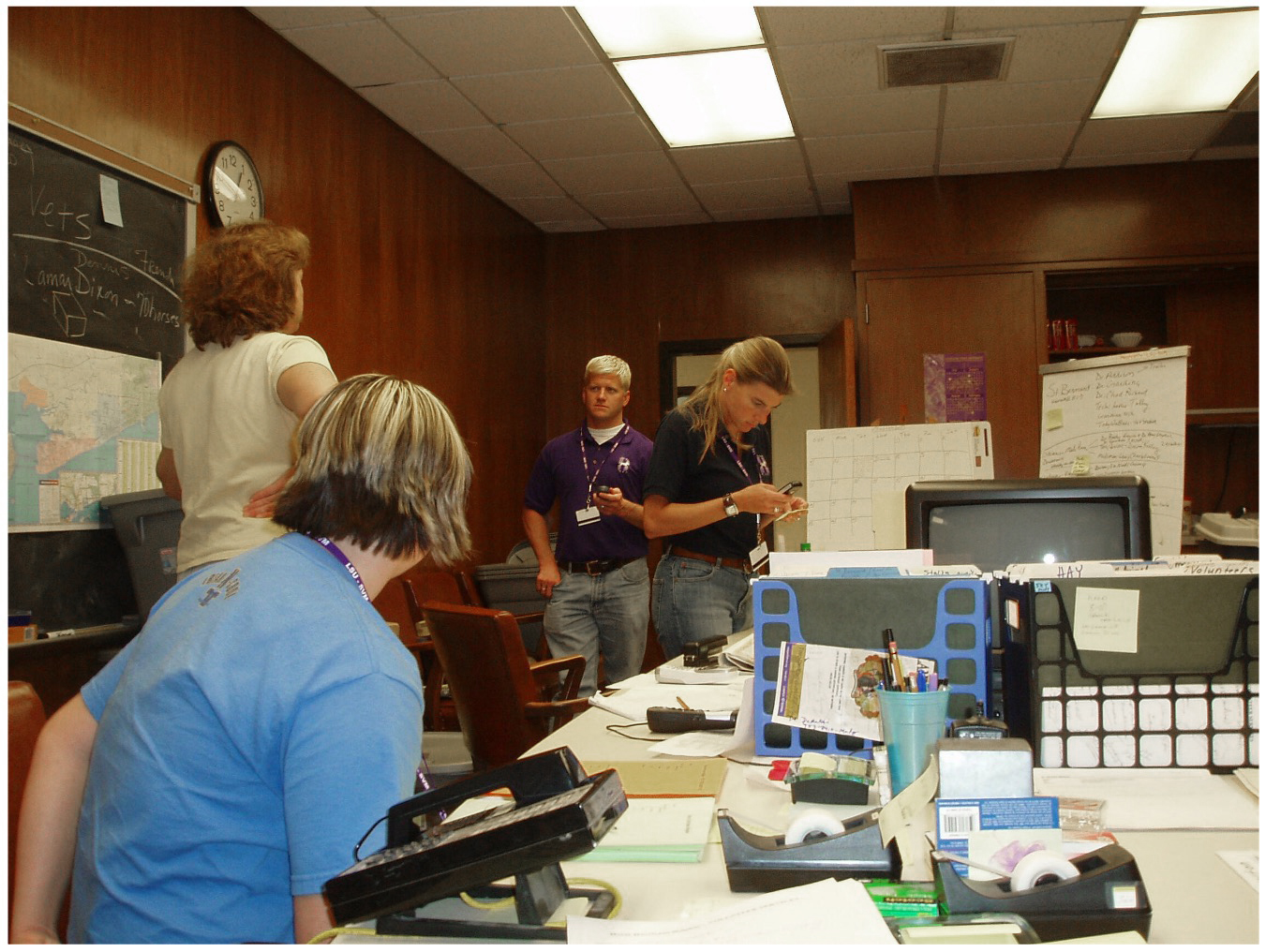Katrina at 20
20 heroic tales of people helping animals
as told to Sandra Sarr, LSU Vet Med strategic communications
Ashley Stokes, DVM, Ph.D. (LSU 2001, 2003), dean, UC Davis College of Agricultural & Environmental Sciences

Dr. Ashley Stokes (right) in the EHSP command center with Dr. Becky McConnico (left, standing) and Dr. Rustin Moore.
– Photo Credit: Dr. Rustin Moore
“It was unlike anything I’ve ever experienced. I was researching and teaching at LSU Vet Med in 2005. LSU Vet Med stepped up in so many ways. We started receiving calls from citizens and local authorities at the vet school almost immediately after the storm. They needed help with resources—animal rescue, food, and water. They had to leave New Orleans quickly. I particularly remember a call from someone from south of Belle Chase, La., who had left horses, cattle, and two dogs in the house and needed help. It was surreal to see the devastation, houses floating, there in the Delta. We were making real-time decisions to help their animals. They’d lost so much, and for some, their animals were all they had left.
I helped with the Katrina equine group, and we set up a command center in an LSU Vet Med conference room. There were no cell phones and no social media. We put a paper map of Louisiana on the wall and put pins in the locations where people called for assistance. We covered all of New Orleans and surrounding areas, including the North Shore and extending west to Baton Rouge. We took the callers’ information and sent teams of staff, students, and volunteers to different locations with donated trailers, hay, water, and other resources for rescue. We transported rescued animals to Lamar Dixon Expo Center, (which started as a human shelter, then housed small and large animals, including 500 horses), to Parker Coliseum (it housed mainly small animals, and triaged sick or injured animals to LSU Vet Med for treatment and care. Local resources were quickly overwhelmed. Animals couldn’t be in human shelters then.
They were very long days that were all-hands-on-deck, and students helped tremendously.
Most horses had ID microchips, which helped us eventually get them back to their owners. We encountered so many who were willing to help, donate materials, lend trucks and trailers. We would take any animal we could—when transporting horses, someone’s pet bird sat on the driver’s shoulder. Salt water burned grass, and there was no grazing for horses and cattle. We got hay, feed, and water to them, and needed to find new pastures for them.
My brother, Bryan, was a helicopter pilot with the Louisiana National Guard, and rescued people off of rooftops. He would let me know when he’d seen from the air animals needing help and could tell me if the water was too high for us to get our rescue teams to the locations where our help was requested. It was so important because communications were hard with no cell phones. Knowing who had trailers and where high ground was to move animals to was important. Military officials helped us and had helicopters drop hay for cattle lined up on levees.
Katrina taught us how important it was to identify resources and obtain credentials in advance. LSART as we know it now came out of Katrina. I’m so proud of Louisiana’s efforts to become more prepared.
We continued rescue for months after the storm. We were there for people for the long haul. The whole experience was transformational in my life. What I learned from Katrina became part of my own career and what I continue to do.
There were beautiful moments, especially seeing how resilient and helpful people could be. I saw every day how the community came together and were absolute bright lights. Positive came from tragedy.”